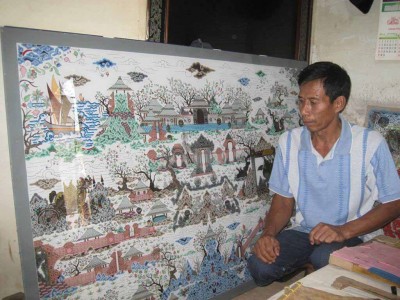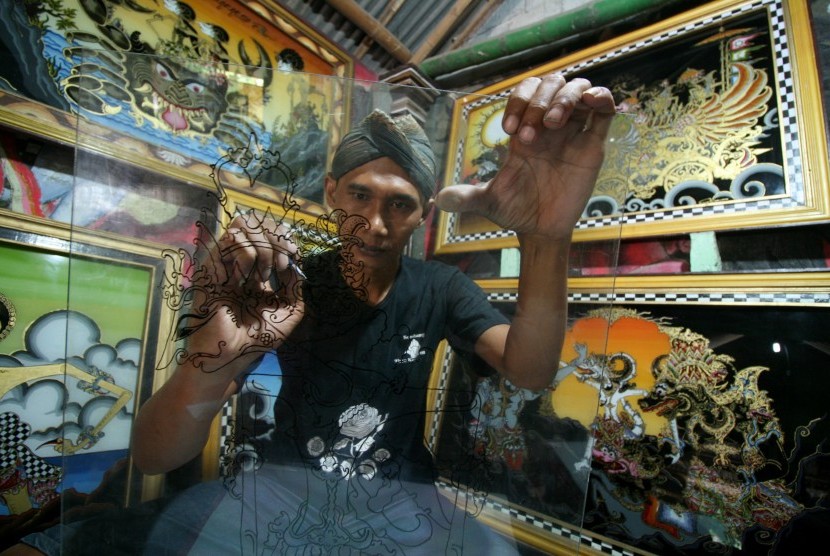REPUBLIKA.CO.ID, JAKARTA -- A researcher and director of the Center for Southeast Asian Studies in France, Jerome Samuel, has revealed the history of glass painting in Java during the 19th and 20th centuries.
In a discussion titled "Reverse Glass Painting in Java: A Popular Passion in the 19th and 20th Centuries" at the French Cultural Center, Jakarta, on Wednesday (April 12), Samuel stated that glass painting was a decorative art, which was popular among the Javanese in the 19th and 20th centuries.
Introduced by European and Chinese painters in the mid-19th century, glass painting has become an icon of modernity and a blend of Javanese, European, Chinese, and Muslim styles.
"In the colonial period, the glass paintings were not only in demand by indigenous people but also by the Chinese and Arabic," he noted.

Cirebon, West Java's artist sat near his glass painting artwork. Republika/Lilis Sri Handayani
Samuel added that most of the paintings were about colonial era, while others depict the lifestyle of the Dutch East Indies. There are also few that depict modernity, religious, and political aspects.
Glass painting is one medium among many other medium such as paper, wood, leather, and zinc, he added.

Iwan, an artist from Indramayu, West Java, has finished the glass painting of Samiaji, the puppet figure. His artwork are sold from Rp 150,000 - Rp 750,000. Antara
According to Samuel, studies on glass painting are still limited, both in Indonesia and abroad. The first study was made by a Dutch, Hooykaas-van Leeuwen Boomkamp, in 1930. The study describes glass painting's historical background at the time, especially in Yogyakarta.
The most profound research was done in the early 1980s by a team of Japanese researchers led by a scientist named Seichi Sasaki, resulting in a collection of glass paintings photo which they found.
Recently, a research dissertation by Eddy Hadi Waluyo revealed that glass panting art started from 1980s to 2000 period in Cirebon (West Java), Yogyakarta, and Nagasepaha, Buleleng, Bali.
According to Samuel, the development of glass painting art started in the early 19th century to the 1970s. Only certain areas such as Cirebon still maintain the art.


